Text and Photos by Henrylito D. Tacio
“There are two great complexes of ancient temples in Southeast Asia, one at Bagan in Burma, the other at Angkor in Cambodia. The temples of Angkor, built by the Khmer civilization between 802 and 1220 AD, represent one of humankind’s most astonishing and enduring architectural achievements. From Angkor the Khmer kings ruled over a vast domain that reached from Vietnam to China to the Bay of Bengal. The structures one sees at Angkor today, more than 100 stone temples in all, are the surviving remains of a grand religious, social and administrative metropolis whose other buildings – palaces, public buildings, and houses – were built of wood and have long since decayed and disappeared.” — From Sacred Sites
***
It was already almost midnight when we arrived at Siem Reap in Cambodia. So, when we hit our bed in the hotel where we were billeted, we immediately fell asleep.
We woke up the following day feeling refreshed. I came first to the hotel’s restaurant for our breakfast. Imelda Abano came next, and then finally, Rhaydz Barcia. The three of us were covering an international conference on climate change.
“So what we will be doing today,” I asked my two companions while we were eating. “The conference will still be tomorrow. We have a day for ourselves.”
“Why don’t we go and see Angkor Wat?” Imelda suggested. “That’s a good idea,” Rhaydz agreed. “That is what I have in mind, too,” I said.
After eating, I immediately went to the hotel front desk if someone could help us. The person answered affirmatively. “It’s US$74, Sir,” he said. “What is that for,” I inquired? He replied, “The US$35 is for your English speaking tour guide and the US$39 is for the four-seated car.”

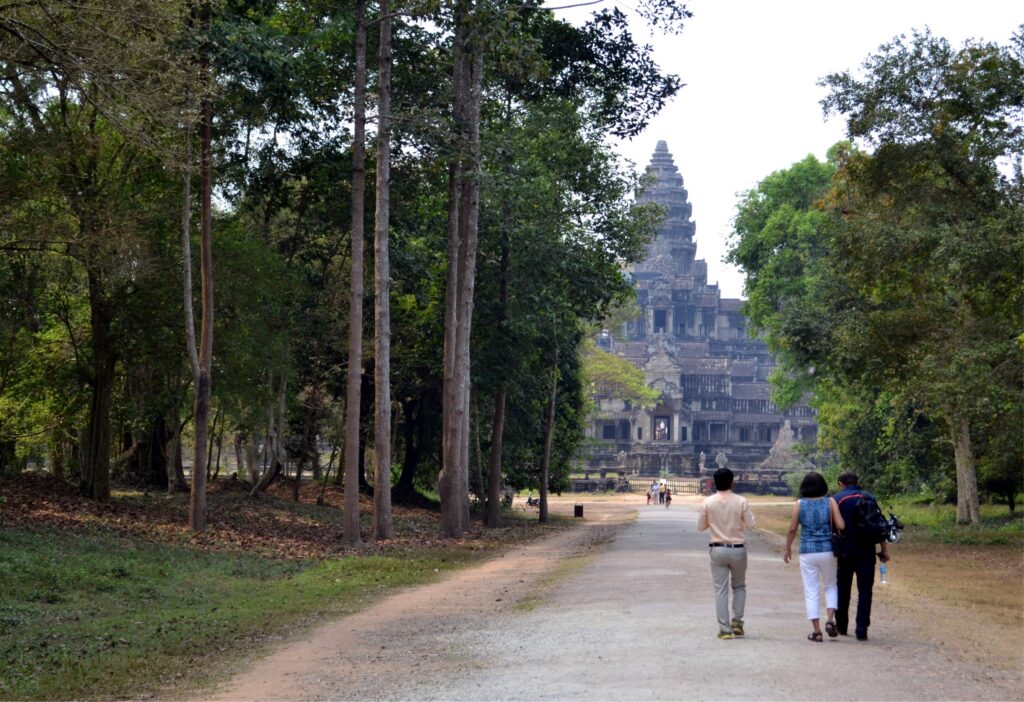
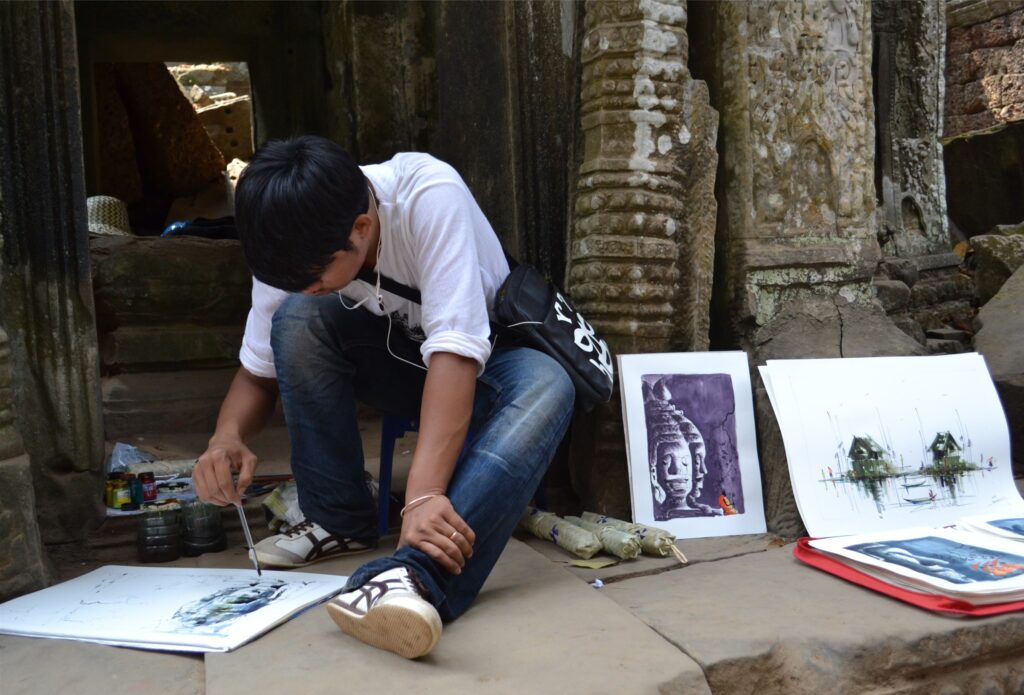
“That’s fine with me,” Imelda said. “We will just divide it equally among the three of us.”
We waited at the hotel’s lobby for about thirty minutes. Then our guide, named Phan, came. After a brief introductory and short briefing, we were on our way to the Angkor Archaeological Park, which was declared a World Heritage site by the United Nations Educational, Scientific and Cultural Organization (UNESCO) in 1992. At the same time, it was also placed on the List of World Heritage in Danger due to looting, a declining water table, and unsustainable tourism.
The drive was about 20 minutes. “We have to get down here and pay US$20 per person as entrance fee,” Phan told us. We had to join a queue and have a picture taken after paying US$20. In a matter of a few minutes, we were given our one-day pass with our picture in it. For those who want a two or three days pass, the price is US$40 per person, while a one-week pass costs US$60 per person.
“There are more than a hundred temples and it will take you several days to see them,” our guide said. “For today, we will see only three temples, including Angkor Wat.”
That’s fine with us, we chorused. Our first stopover was Angkor Thom. The last capital of the Khmer Empire, it was a fortified city enclosing residences of priests, officials of the palace, and military, as well as buildings for administering the kingdom.
Among the temples you can find inside the walls of the “Great City,” as it was then known, include Bayon, Phimeanakas, Baphuon, Terrace of the Elephants, Terrace of the Leper King, Prah Palilay, Tep Pranam, and Prasat Suor Prat.
The Bayon is the most famous among these temples; it is a Buddhist temple but retains elements of Hindu cosmology and imagery. Standing in the exact center of the walled city, it represents the intersection of heaven and earth.
The Japanese Government Team for the Safeguarding of Angkor has described the temple as “the most striking expression of the baroque style” of Khmer architecture in comparison to the classical style of Angkor Wat.

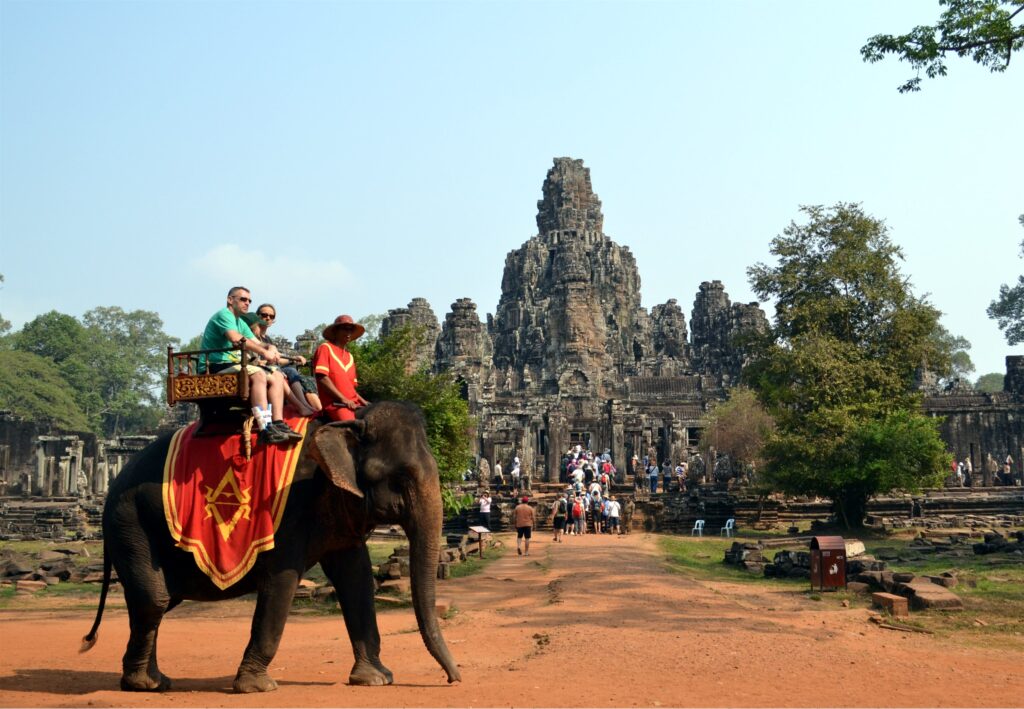
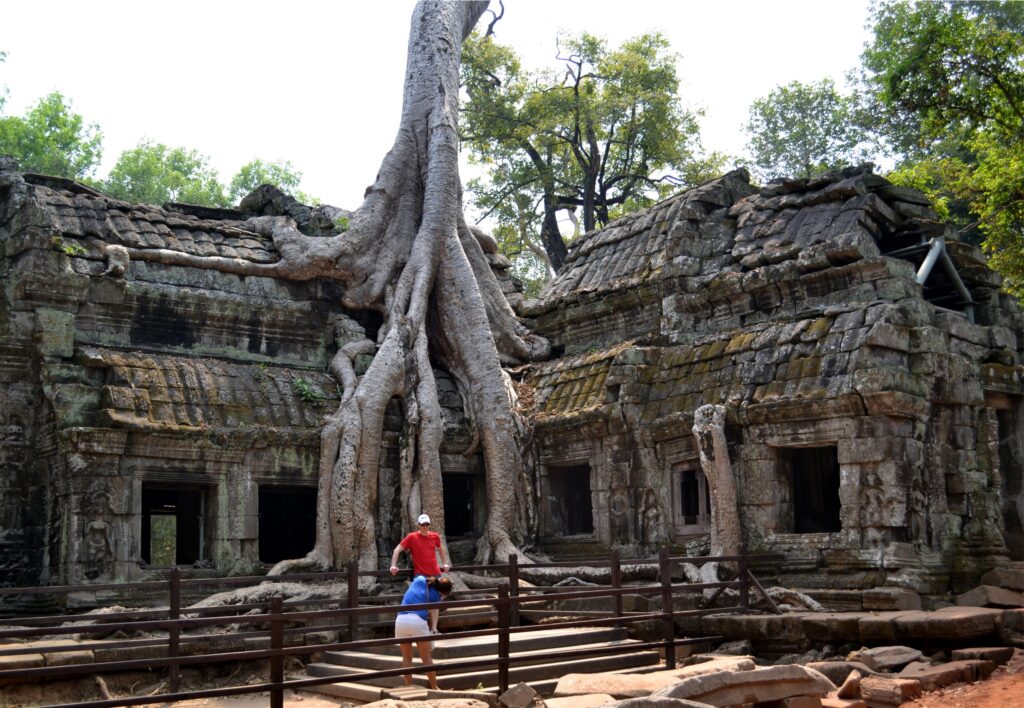
After taking some photos, we decided that it was time to visit another temple. But we thought it was just near. We were wrong. We hiked for almost a kilometer before we located our vehicle. We were tired, and it was good that our driver brought some water.
A few minutes later, we were on our second stopover: the Ta Prohm, which was as seductive as Lara Croft. Yes, this was the place where Tomb Raider was filmed. The Lonely Planet described it in these words: “It is a series of dark galleries and pillars held hostage under the iron clasp of gigantic roots. The walls are decorated with carvings of sensuous celestial nymphs with smaller roots crawling across them like a rash.”
The Sanskrit inscriptions on the walls said the temple held thousands of pearls, precious stones, and golden dishes weighing more than 500 kilograms. But unfortunately, this temple has been neglected and largely left to the clutches of the living jungle. You see great trees tower the temple with leaves filtering the sunlight.
We were already tired and ready for our lunch. And so our guide went to a nearby restaurant, where we ate Cambodian meals. After taking a rest for a few minutes, we were ready for our final stopover: Angkor Wat.
“(Angkor Wat) is of such extraordinary construction that it is not possible to describe it with a pen, particularly since it is like no other building in the world. It has towers and decoration and all the refinements which the human genius can conceive of.” That was Antonio da Madalena, a Portuguese and one of the first Western visitors to the temple, said.
Henri Mouhot, the French naturalist and explorer who popularized the site in the West through the publication of travel notes, wrote: “One of these temples—a rival to that of (King) Solomon and erected by some ancient Michelangelo—might take an honorable place beside our most beautiful buildings. It is grander than anything left to us by Greece or Rome, and presents a sad contrast to the state of barbarism in which the nation is now plunged.”
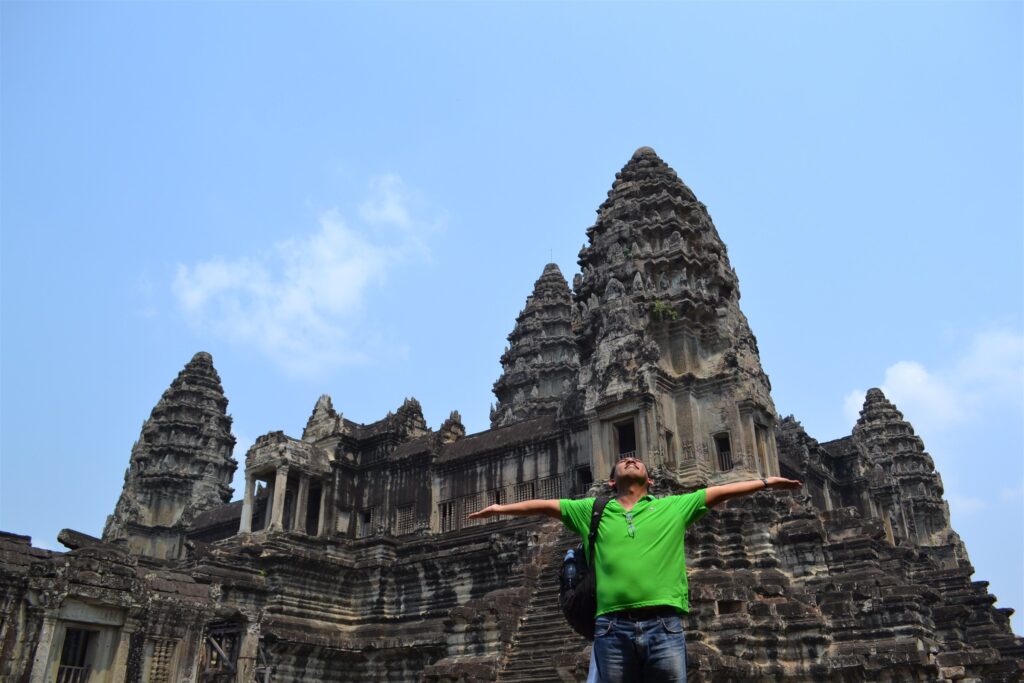


It is no wonder that foreigners flock to see Angkor Wat (which means “Temple City” or “City of Temples” in Khmer). “Most of our visitors are Koreans,” Phan said. Chinese is next, then Japanese, and finally Europeans — in that order.
The tourism office of Cambodia describes Angkor Wat in these words: “… In its beauty and state of preservation, (Angkor Wat) is unrivaled. Its mightiness and magnificence bespeak a pomp and a luxury surpassing that of a Pharaoh or a Shah Jahan, an impressiveness greater than that of the Pyramids, an artistic distinctiveness as fine as that of the Taj Mahal.”
There are so many things you can do while at the Angkor temples. You can go there via tuk-tuk, a motorcycle with a cabin attached to the rear. Since automobile traffic is still not that bad — unlike in Bangkok, Thailand — tuk-tuk is the most common form of urban transport. You can hire a tuk-tuk and driver by the day. Be sure to negotiate first.
If you have not ridden an elephant yet, try to do so while you are outside of the temples. There are restaurants outside the temples, too. Coconut drinks are available — so are bottled waters.
If you see some monkeys around (the temples are surrounded by forests), don’t try to eat, or you end up without food as they might snatch what you are eating.

